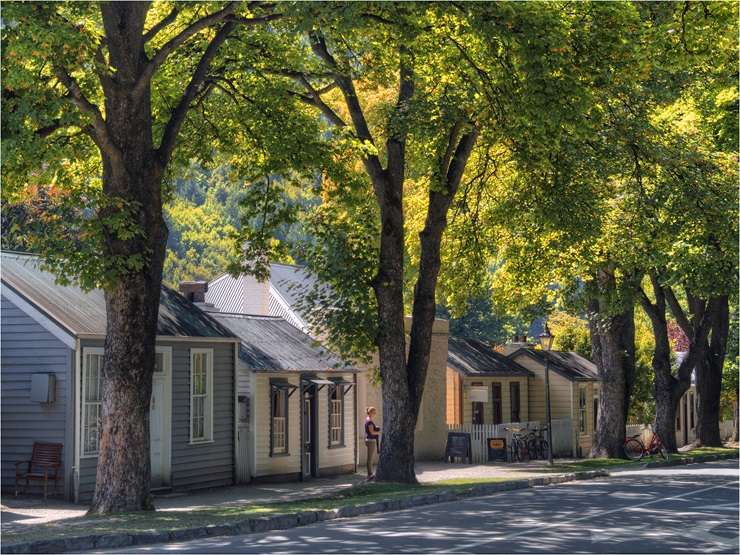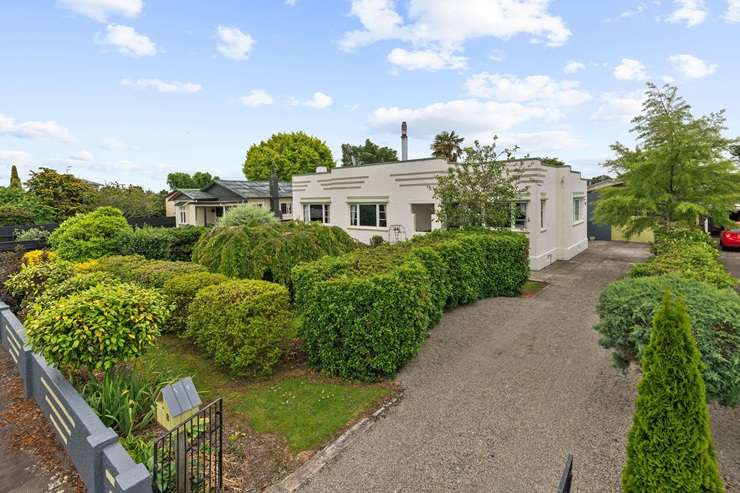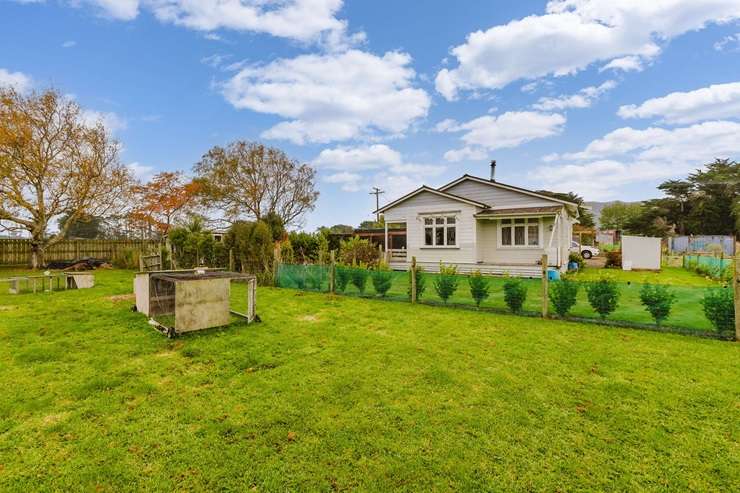First-home buyers, not sellers, appear to be the winners of New Zealand’s post-slump housing market, new OneRoof figures suggest.
In the last six months, the nationwide average property value has grown 0.8% ($8000) to $975,000, while the number of houses for sale has jumped 25% over the same period.
Entry-level buyers have benefitted most from the surge in residential listings, with the number of homes for sale in the sub-$1 million price bracket accounting for 70% of the total.
Start your property search
Sales figures covering the six months from November 2023 show that just over 20,000 homes were snapped up for less than $1m, more than double the number bought for more than $1m.
A growing desire among vendors to strike a deal has put more homes within reach of budget-conscious Kiwis, with more than one in 10 listings published in the last six months reducing their initial sale price to meet the market.
The average price drop was $74,000, although some vendors cut their asking price by as much as $1m, giving some buyers a chance to leap into homes and suburbs they would have previously viewed as too expensive.
The majority of price realignments (60%) were outside of Auckland, and at the sub-$1m end of the housing market, with entry-level buyers enjoying average discounts of between $23,000 and $64,000.
While more than half of the Auckland homes listed for sale since November 2023 had search prices of less than $1m, the city had fewer options for buyers whose budgets maxed out at $750,000 or $500,000.
Less than a quarter of the city’s listings expected to sell for less than $750,000 (and less than 5% had a search price of less than $500,000). Canterbury had the most sub-$500,000 options (1800), reflecting the overall lower price point of the region.
OneRoof editor Owen Vaughan said: “For first-home buyers with pre-approval, there are lots of positives to be found in the current housing market: property values have softened, vendors are dropping their prices, and thanks to a flood of listings at the start of the year, there are more houses for sale than there are buyers.

OneRoof editor Owen Vaughan: "Some regions and price brackets are doing better than others, and there’s still a desire to buy, with sales volumes for the last six months up 16% year-on-year." Photo / Fiona Goodall
“And a lowering of loan-to-value ratios, announced by the Reserve Bank just before the Budget, will make low-deposit lending easier.
“That doesn’t mean the market is without its challenges. The Reserve Bank has indicated interest rates will stay at restrictive levels for longer, debt-to-income ratios, governing how you can borrow, are now a reality and the Government recently axed the first home grant scheme, which had helped many Kiwis into their first home.”
The analysis comes a year after ANZ economists announced that New Zealand house prices had found a floor and separate figures from the OneRoof-Valocity House Value Index showed the nationwide average property value was no longer in decline.
Discover more:
- Budget 2024: What the tax cuts mean for the housing market
- Tony Alexander: We've burned through all the Covid cash - what happens next?
- Debt to income ratios now a reality: What do they mean for first home buyers and investors?
Both heralded the end of a year-and-a-half-long housing market slump that saw property values tumble by as much as 25%.
Since June 2023, the nationwide average property value has grown 3.3% to $975,000. However, much of that growth was in spring 2023, when listings were lower and expectations of an early cut in interest rates were higher. In the last six months, the average property value grew just 0.8%, and in the last three months, it dropped 0.2%.
While the average property value in every region is now above its post-peak trough (the dates for each region vary but in West Coast’s case, values never actually dropped), value growth in 2024 has been patchy.
Just four regions have registered value growth of more than 1% in the last three months and three regions – Auckland, Bay of Plenty and Gisborne – have seen values drop.
Vaughan said the post-slump growth figures had to be seen in context. “Compared to the long-term yearly average, 3.3% growth nationwide and 2.9% in Auckland seem underwhelming, but not so when compared to the recovery rate post-GFC, when values grew an average of 1% per year nationwide and 2.4% in Auckland.
“While the surge in listings at the start of the year suggests there had been high expectations of a quick rebound for house prices, the reality is that the market is still finding its feet. Some regions and price brackets are doing better than others, and there’s still a desire to buy, with sales volumes for the last six months up 16% year-on-year.”

Arrowtown has rebounded strongly since the end of the housing market slump, with the town's average property value up $313,000. Photo / Getty Images
The OneRoof-Valocity analysis shows the extent of the recovery at a suburb and local authority level. Of the 780 suburbs with more than 20 settled sales in the last 12 months, 59 saw value growth of more than 10% since hitting the trough. Most were located in Canterbury and Otago, although the four biggest jumps were in Manawatu-Whanganui.
Leading the pack is Woodville, in Tararua. Its average property value is 36.4% ($124,000) above its lowest point post-Covid, although at $464,000 it is still $45,000 shy of hitting its peak of $509,000.
The biggest dollar leaps post-slump were in Whitford (+$432,000), Arrowtown (+$313,000), and Herne Bay (+$291,000).
Twenty-eight suburbs, mostly in Wellington Region, saw value growth of less than 1% since hitting the trough. Bottom of the pile is Featherston, which is still in decline, followed by Greytown (up only 0.11% on its trough value) and Mount Victoria (+0.16%).
At a TA level, property values rebounded strongest in Tararua (+20%), Kaikoura (+14.13%), and Ashburton (+1.93%), while property values in Waikato, Otorohanga, and Central Hawke’s Bay have barely changed.
Christchurch and Queenstown-Lakes are the best-performing major metros, with the average property value in each growing more than 7% since hitting the trough last year. Auckland’s average property value is 2.9% above its trough, while Wellington’s is up 5.05%. Tauranga was up 3.13%, Dunedin was up 5.26% and Hamilton was up 2.75%.
Valocity senior research analyst Wayne Shum said the year since the end of the slump could be split into two distinct halves. In the first half, value growth was strong, but in the second half, values barely moved.
There were some exceptions, though. Growth in Queenstown has been fairly consistent, fuelled by wealthy buyers. Fendalton and Merivale in Christchurch, have also shone. These two are high-end locations whose buyers tend not to be affected by interest rate movements. “If you're buying in these suburbs, it's probably your second or third home."

Valocity senior research analyst Wayne Shum said interest rate rises did not seem to affect wealthier buyers. Photo / Fiona Goodall
The data suggested most of the value growth in the top-performing suburbs was driven by people upgrading, Shum said.
“Interest rates affect these buyers differently because they would tend to have more equity. They're not buying their first home, they're not worrying about a 20% deposit and passing the CCCFA."
Shum noted that the four biggest growth suburbs sat at the other end of the market. The data, he said, suggested much of the activity in Tararua had been driven by investors looking for higher rental yields.
A freestanding house in Auckland might cost an investor $800,000, but in Tararua the same type of property could be bought for less than $500,000 and would offer higher yields.
He believed the job cuts in Wellington had hindered value growth in the capital, with confidence likely to have been shaken in the lead-up to the election, when National and Act were promising to reduce public sector costs.
“And you don’t know when it’s ending, which is the problem. Every week it’s a new department.”
Miles Workman, senior economist for the ANZ, agreed that the year since its May 2023 report had been one of two halves. “I don't think the market has significantly surprised our forecasts. We've probably seen some surprises, with some months coming in strong and some months coming in a lot weaker.”

An Art Deco delight at 8 Huxley Street, in Pahiatua, Tararua, is looking for buyers with more than $389,000 to spend. Photo / Supplied

Another low-cost home for sale in Pahiatua. The three-bedroom property sits on 3400sqm and is seeking $329,000-plus. Photo / Supplied
Accuracy in house price forecasts was always a challenge, he said.
“It's one of the variables I think economists get wrong the most and partly that's just because the drivers of the housing market are not constant.”
ANZ's current forecast for the year ahead was a 3% rise in house prices, with momentum remaining soft until the end of the year, when fixed mortgage rates are likely to ease.
In areas like Tararua, Workman thought affordability was a factor attracting people there. “Ultimately it's a reflection of the urban centres being unaffordable and people looking for affordable markets elsewhere.”
OneRoof talked to agents who are selling in the top-performing suburbs. They all noted increased activity and a shift in buyer mood since the end of the slump.
Patrick Baker, sales manager for Property Brokers in Tararua, said first-home buyers from neighbouring cities and towns had been drawn to the area's lower price points.
He believed the new four-lane highway from Palmerston North to Woodville, in Tararua, would lift property values further. The highway is set to open next year and some people are investing now in the hope values will increase.

Bayleys agent Adam Heazlewood says homes for sale in Fendalton and Merivale were attracting strong interest outside of Christchurch. Photo / Kai Schwoerer
Baker was a little surprised to see the Tararua towns of Woodville, Pahiatua, Eketahuna, and Dannevirke showing the strongest value growth in the country. “We're definitely not run off our feet as agents. We're still selling stuff, but slowly.”
But they were attractive towns, and Pahiatua, for example, had employment opportunities. He said there were some attractive properties to be had for comparatively low prices, such as a “beautifully done” art deco home for sale at 8 Huxley Street, in Pahiatua, for $389,000-plus.
A lifestyle property in the town, at 648A Gorge Road, was also proving popular, with interest resembling “a fox in a henhouse”, Baker said.
The property needed some work but had just under an acre of land and Baker said he had taken calls from “everywhere”, including Auckland and Wellington.

A lifestyle property for sale at 40 Pukeko Lane, near Weston and Oamaru. Photo / Supplied
Another small town that has seen strong value growth in the last 12 months is Weston, in Otago.
Tony Spivey, from PG Wrightson, said more property had been on the market so there had been more sales, but probably the sale of some of the stronger lifestyle properties had pushed values up.
“It only takes two or three sales and all of a sudden you're going, ‘Crikey, that's looking pretty positive’ - and it is, don't get me wrong - but it's not like it's a massive market.”
Weston is about 3km west of Oamaru, and there is a mix of lifestyle properties and new residential homes between the two towns. “That's where the opportunity for land and zoning is to do things. That direction is where the bulk of the growth has been,” Spivey said.
PG Wrightson has a lifestyle home for sale at 40 Pukeko Lane in the $1.18m-plus bracket, with Spivey saying it was a modern, spacious new home only a minute from each town.
Value growth has also been strong in the more upmarket parts of Canterbury, such as Fendalton and Merivale in Christchurch.
Bayleys agent Adam Heazlewood sells a lot in those suburbs and said while demand was always high, there had been more action recently.
“It just seems a lot more transactional than it had been a year ago, which is surprising in some ways given interest rate forecasts and other economic factors.”
Listings in the suburbs were attracting a lot of interest from outside of Christchurch, especially from buyers from Otago and Auckland.
- Click here to find properties for sale














































































